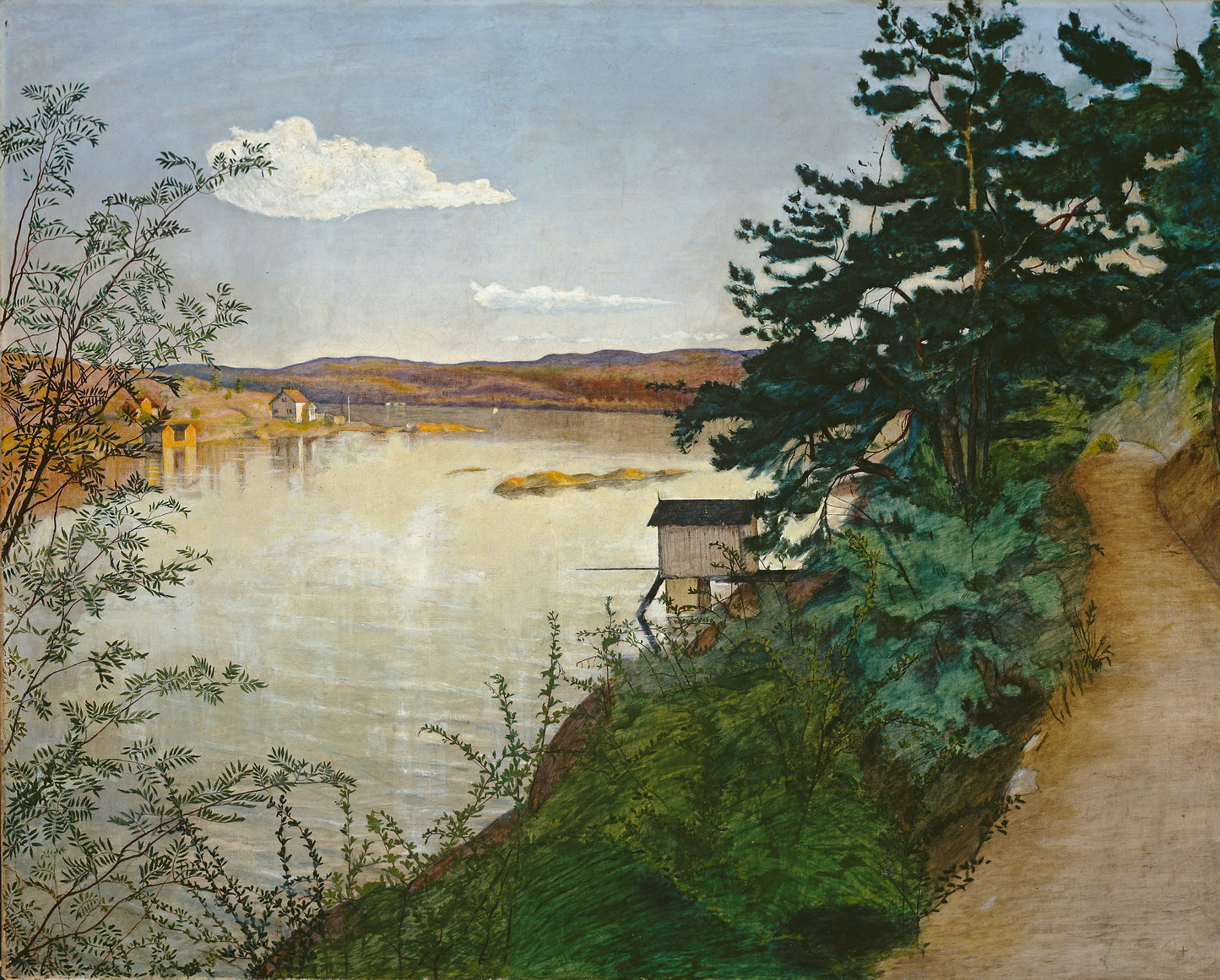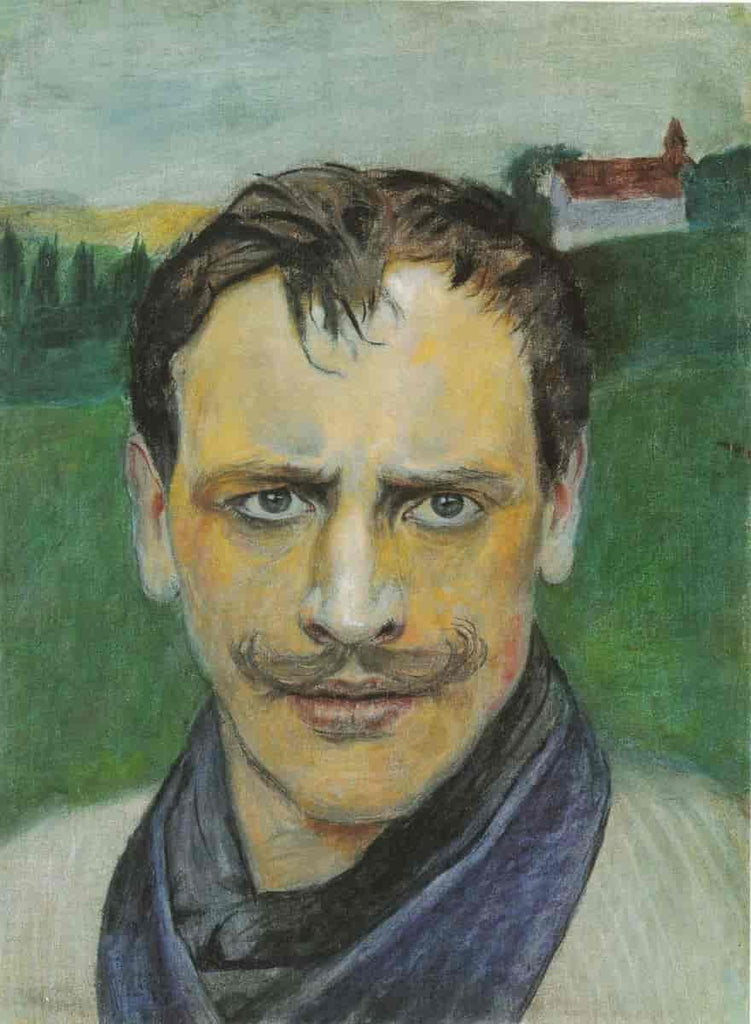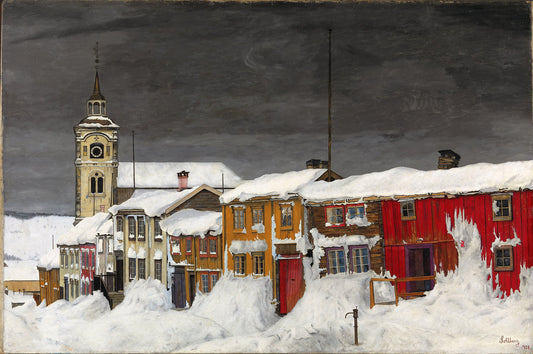Harald Sohlberg
Afternoon sun
Afternoon sun
Couldn't load pickup availability
Experience museum-quality art from the National Museum's collection! Our Posters are printed on premium quality Litho White Matt (230 g) photo paper and feature a visible National Museum logo on the white border. Artprints are produced on exclusive Museum Rag (260 g) cotton art paper for an extra luxurious finish. Each print is made to order by Dáidda Printlab to ensure the highest quality and detail in the reproduction.
About the original:
Harald Sohlberg had his first meeting with Rondane in 1899. The experiences of winter in the mountains became important for his further development as an artist. He painted many motifs from here and his most successful work ever is precisely Winter Night in Rondane, which was voted "Norway's national painting" after a listener poll on NRK in 1995.
Røros
Harald Sohlberg and his wife Lilli Hennum lived in Røros at the beginning of the 20th century. The streets and the church in Røros are well-known motifs in his pictures. The attention surrounding the paintings from here led to Bergstaden being later returned to its original appearance. The mountain town of Røros and the Circumferens (the surrounding areas) were protected in 1980, listed on the UNESCO World Heritage List.
Early talent
Harald Sohlberg was number eight in a group of twelve siblings. The parents were part of the upper class in the capital; his father ran a fur business. As a child, Sohlberg drew a lot, and in his family's circle of friends there were artists who saw that he had talent. In the years 1885-89, he was a student at the School of Arts and Crafts, and was trained as a decorative painter. In the autumn of 1891, Sohlberg was tutored by Erik Werenskiold and Eilif Peterssen. Sohlberg wanted to be a painter!
In 1894, he made his debut at the National Art Exhibition with Nattegloð. In the same year he was a pupil of Harriet Backer, and in 1895 he received an artist grant and traveled to Paris.
Summer landscape
From 1905, Harald Sohlberg and his family, which eventually also included several children, mainly lived in Kristiania, with the exception of summer stays in various coastal towns by the Kristiania Fjord. Landscapes were Sohlberg's most important circle of motifs and several of his landscapes have motifs from these summer stays, such as e.g. From the Oslo Fjord (1926).
Date: 1895
Other titles: Afternoon sun (ENG)
Designation: Painting
Material and technique: oil on canvas
Technique: Oil
Material: Canvas
Dimensions: H 65 cm x W 81.5 cm
Subject: Visual arts
Classification: 532 - Visual arts
Motif: Fjord Summer
Type of motif: Landscape
Motif - place: Nordre Langøy,
Langøyene, Nesodden
Acquisition: Purchased 1994
Inventory no.: NG.M.04322
Part of exhibition: Da Dahl a Munch. Romanticism, realism and symbolism in Norwegian landscape painting, 2001 - 2002
Japanomania in the Nordic countries 1875 - 1918, 2016
Registration level: Single object
Owner and collection: The National Museum of Art, Architecture and Design, Visual Art Collections
Photo: Ivarsøy, Dag Andre
Delivery
Delivery
Pickup: You can pick up your package from us shortly. You will receive a pickup notification when it is ready.
Postal shipment: Delivery by Posten normally takes 2–5 days in Norway and up to 14 days to Europe and globally.
Packaging: All products are made to order and shipped rolled in environmentally friendly packaging.

See all works
-
Winter night in Rondane
Vendor:Harald SohlbergRegular price From 150,00 NOKRegular priceUnit price per -
Summer night
Vendor:Harald SohlbergRegular price From 150,00 NOKRegular priceUnit price per -
Street in Røros
Vendor:Harald SohlbergRegular price From 150,00 NOKRegular priceUnit price per -
A flower meadow to the north
Vendor:Harald SohlbergRegular price From 150,00 NOKRegular priceUnit price per

Harald Sohlberg
Harald Sohlberg was a Norwegian painter who was central to the breakthrough of neo-romanticism in Norway. He was born in Oslo and had a very distinctive style where he placed great emphasis on drawing and details, while at the same time the pictures were not pure imitations of nature. Sohlberg sought to express his experiences of nature and adapted drawing and colors so that the pictures could convey these experiences. The symmetrical composition he used in many of the pictures helps to bring in a supernatural, almost religious atmosphere.
Education
Sohlberg began his artistic education at the Royal School of Arts and Crafts in 1885, where he was a student up to and including the autumn of 1890. He also had a stay in Slagen by Åsgårdsstrand in 1890, where he was a student of Sven Jørgensen. He then studied under Kristian Zahrtmann in Copenhagen in 1891–1892 and drew for four months at Eilif Peterssen's and Harriet Backer's painting school in 1894.
Known for mood pictures
Sohlberg traveled to Valdres to paint in the summer of 1889, and there he painted a study called Summer evening, a picture with broad brushstrokes and violet tones that emphasize the evening atmosphere. The picture links to the summer night pictures that Kitty Kielland and Eilif Peterssen had painted by Dælivannet in 1886, and shows the interest in conveying the mood of nature which was to become Sohlberg's main interest in the following years.
In 1894, Sohlberg made his debut at the Statens Kunstutstilling (Autumn Exhibition) with the picture Nattegloð (1893), which was to be his artistic breakthrough and was purchased for the National Gallery. The picture has many of the distinctive features and qualities that were to become a hallmark of Sohlberg's art. In 1899, Sohlberg painted Sommernatt, a picture from Nordstrand with a view over the Oslofjord. Sohlberg has sought here to capture the special atmosphere of the Norwegian summer night, and he stylizes the landscape in clean surfaces and clear lines.
Sohlberg is particularly known for atmospheric images such as Summer Night, the cemetery image Night, Flower meadow north, and not least Winter Night in Rondane. He had a significant influence on Norwegian art in the first half of the 20th century, and his style and motifs have inspired many later Norwegian artists.





